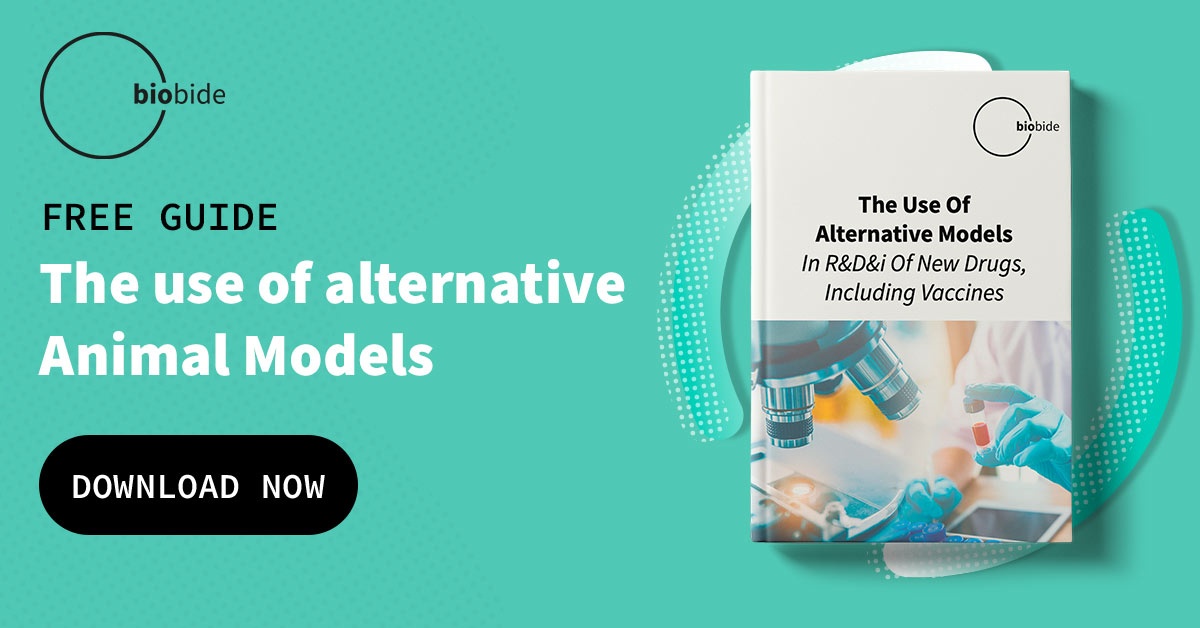The Food and Drug Administration (FDA) Modernization Act 2.0 was signed by the USA President Biden on December 29th,2022 as a cornerstone of regulatory evolution, shaping the future of healthcare while emphasizing ethical considerations in Research and Development. At its core lies a pivotal stride toward more humane and scientifically advanced practices through the authorization for the use of certain alternatives to animal testing in Drug safety and efficacy investigations. This transformative shift signifies a commitment to ethical innovation, driven by technological progress for a redefined approach to Drug Discovery and Development.
Ethical Imperative: Phasing Out Animal Testing
The authorization of alternative models to animals in safety and efficacy assays within the FDA Modernization Act 2.0 represents a paradigm shift in the Pharmaceutical and Cosmetic industries. It arises from a collective acknowledgment of ethical concerns surrounding the use of animals in Research. The Act allows obtaining exemptions to animal testing towards alternative models setting a trajectory aiming to phase out or significantly reduce the reliance on traditional animal models for evaluating product safety and efficacy.
Technological Advancements: Paving the Way for Alternatives
The landscape of scientific innovation has heralded remarkable advancements, propelling New Alternative Methodologies (NAMs), such as Danio rerio (zebrafish) or C. elegans to the forefront of Research and Development. Other NAMs that have risen to the forefront are in vitro models, microfluidic systems, organ-on-chip technologies, and computer modeling. All viable alternatives are feasible to replicate human physiology and could potentially combine some of them and even substitute traditional animal models.
Regulatory Mandate: Aligning with Ethical Imperatives
The FDA Modernization Act 2.0 aligns regulatory practices with ethical imperatives, fostering a more stringent yet innovative framework. It encourages the validation and acceptance of NAMs by regulatory entities, emphasizing the pursuit of human-relevant data while safeguarding against potential risks to public health.
Challenges and Progress:
The transition from traditional animal testing to the implementation of new alternatives presents multifaceted challenges:
- Validation: Ensuring that alternative methods replicate human responses accurately. For this reason, there is a strong tendency to create working groups of laboratories and institutions that come together to validate and analyze these alternative models to scrutinize if they are suitable to substitute the traditional models. As OECD, EPA, NIH/NIEHS, EFSA, or HESI consortia are just a few examples of current organizations that have active multidisciplinary working groups studying and analyzing NAMs and test guidelines in order to see how they can be implemented and ensure they are validated.
- Qualification: Confirming the relevant test guidelines such as the OECD guidelines and ICH guidelines are ensured by those NAM and verifying their results with the reference compounds described by those guidelines. For example, Biobide has been the first laboratory to qualify and validate their teratogenicity and developmental toxicity assay for human pharmaceuticals with Zebrafish larvae as a NAM for the ICH S5(R3), making a breakthrough step forward to use and implement Zebrafish for reproductive and developmental toxicity, complying with the 3R Principle of Reduction, Refinement, and Replacement of animals. This work has been published in the Journal of Reproductive Toxicology of Elsevier as “Validation of a zebrafish developmental defects assay as a qualified alternative test for its regulatory use following the ICH S5(R3) guideline. (access here).
- Regulatory Acceptance: Gaining widespread regulatory approval and acceptance of alternative testing methodologies. For example, in many countries, there is a ban on Cosmetic products to be tested on traditional animal models. Therefore, cosmetic companies must rely on alternative models to demonstrate safety and efficacy and comply with the regulatory guidelines if they want to be commercialized and comply with the regulatory framework of European Countries.
- Industry Adaptation: Encouraging industries to invest in and transition toward alternative testing practices. Many entities and governments have been granting financial aid and grants for research and validation for these NAMs to slowly but surely make a transition from traditional models to alternatives.
Before the US placed its eye on the reduction of traditional animal models, the European Union had implemented a commission for the whole purpose of alternative to animal testing, with the implementation of the EU Reference Laboratory for Alternatives to Animal Testing (EURL ECVAM). The US carried through with a similar model with the creation in 2000 of the Interagency Coordinating Committee in the Validation of Alternative Methods (ICCVAM), but with the FDA Modernization Act 2.0, they have gone even further.
Despite challenges, progress is evident. There are continued breakthroughs in scientific innovation that offer increasingly sophisticated and reliable alternatives for more technological advancements. Collaborative initiatives are very important, as collaboration between regulatory agencies, research institutions, and industries will foster the validation and acceptance of NAMs faster.
Future Implications
The acceptance of animal tests replaced by alternative models within the FDA Modernization Act 2.0 sets a precedent for ethical research practices. As the industry embraces this mandate, it paves the way for a future where innovation and ethical considerations converge harmoniously. The focus on human-relevant data and advanced NAMs not only safeguards animal welfare but also enhances the reliability and relevance of research outcomes, ultimately benefiting human health.
The FDA Modernization Act 2.0 marks a pivotal juncture in the evolution of regulatory frameworks. It underscores the commitment to ethical innovation, leveraging technological advancements to redefine research practices. The convergence of ethics, technology, and regulatory oversight within this act heralds a future where scientific progress is harmonized with compassionate and ethical research methodologies, shaping a healthier and more conscientious landscape for all.
References:
- Validation of a zebrafish developmental defects assay as a qualified alternative test for its regulatory use following the ICH S5(R3) guideline - ScienceDirect
- The FDA modernisation act 2.0: Bringing non-animal technologies to the regulatory table - ScienceDirect
- JCI - FDA Modernization Act 2.0: transitioning beyond animal models with human cells, organoids, and AI/ML-based approaches
- Researchers and regulators plan for a future without lab animals | Nature Medicine




